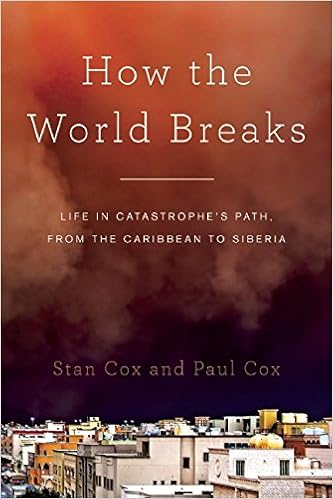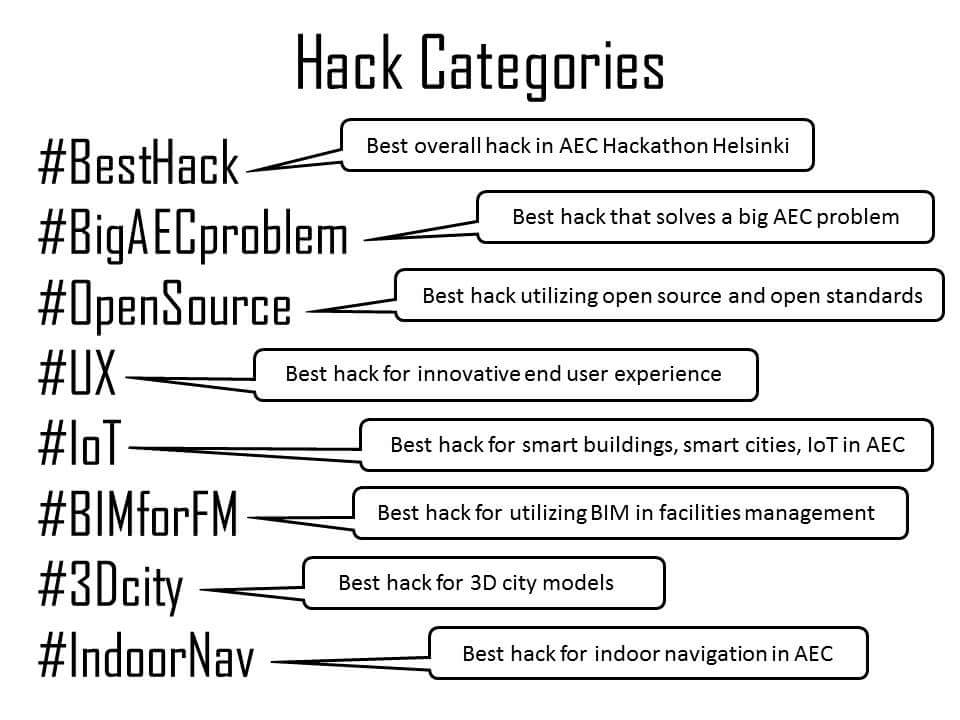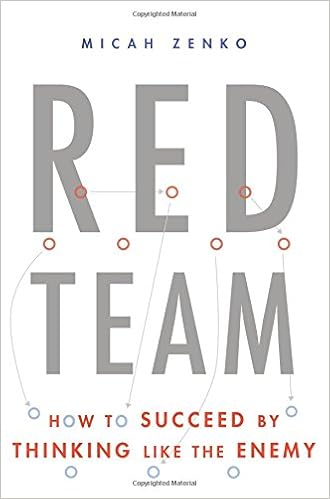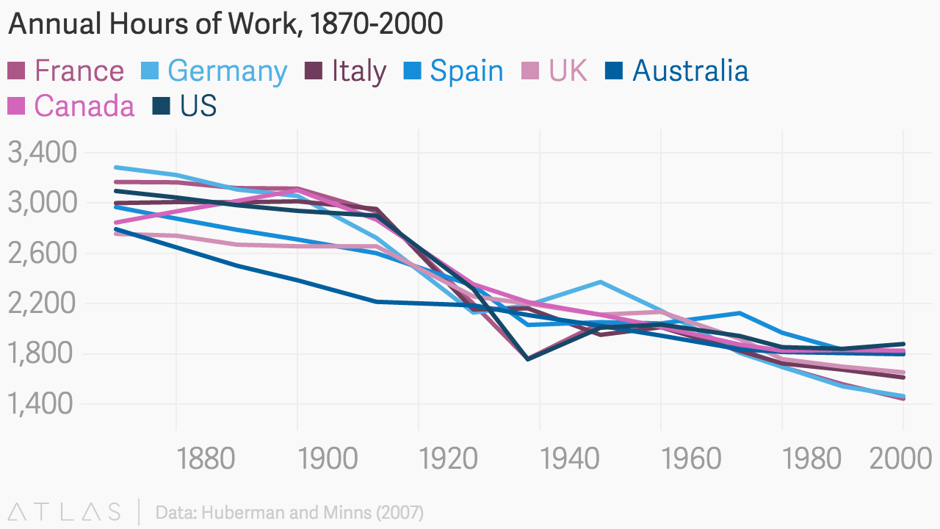
Thursday, December 31, 2015
2016 New Years Resolutions
What about focusing on the following five intellectual and psychological abilities and attributes if you are a young engineer just starting down your career path:

- Preparedness and Work Ethic - Develop a "success" routine. Come in early and stay late. Be prepared in all endeavors. Be disciplined and learn to manage distractions.
- Concentrate and Focus - Engineering is a concentration and focus profession. You need to get X done and you have Y time to do it - and it has to be done correctly the first time. Conduct you daily activities with this in mind.
- Competitiveness and Self-Confidence - Engineering school teaches you how to overcome self-doubt and other psychological obstacles. Don't forget this experience - it will serve you well during your career.
- Stress Management and Humility - Professional careers will have slumps. Learn to manage these slumps. Things are never as bad as they initially seem and tomorrow is usually better than today.
- Adaptiveness and Learning Ability - Like all physical assets, you are subject to the laws of depreciation. Your education depreciates the minute after you get your diploma. You will need renewal and remodeling. Learn to love learning.

A Paragraph to Ponder
From the current issue of American Scientist - The Rising Cost of Resources and Global Indicators of Change by Carey W. King:
"Just like the population, as we have slowed the expansion of our energy infrastructure, it has also become older. I have calculated a dependency ratio for U.S. electric generation equal to the fraction of total capacity that is older than a certain age (for instance, 40 years) divided by the fraction of total capacity younger than that same age. We have never had an older fleet of power generation assets than today. Since the 1970s, we have relied more and more on older power plants."

"Just like the population, as we have slowed the expansion of our energy infrastructure, it has also become older. I have calculated a dependency ratio for U.S. electric generation equal to the fraction of total capacity that is older than a certain age (for instance, 40 years) divided by the fraction of total capacity younger than that same age. We have never had an older fleet of power generation assets than today. Since the 1970s, we have relied more and more on older power plants."

Wednesday, December 30, 2015
Fighting Over CA Water
Farmers Try Political Force to Twist Open California’s Taps https://t.co/PuV7xS2lpw
— Dr.Steven D.Sanders (@DocEngineering) December 31, 2015
Getting a Masters in Urban Analytics
Good example of a program that has a focus on the smart cities/urban analytics movement - - might be a nice fit for an undergraduate civil engineering major.
Tuesday, December 29, 2015
Tire Rotation and the Self Driving Car
Twitter is nice and I like the idea of keeping up with friends on Facebook, but I want a future of self-driving cars. This decade. I had my tires rotated last night. It took a little over three hours of my time - - just wanting. Why can't my truck rotate its own tires? Send it to the service center by itself, have the work done, and then come back home. Why do I have to go along for the ride?
Things need to speed up - from sensors in bridges to "smart" roads - technology needs to be deployed that allows for a saver, cheaper, and faster world. I am tired of waiting on my truck at the service center.
Things need to speed up - from sensors in bridges to "smart" roads - technology needs to be deployed that allows for a saver, cheaper, and faster world. I am tired of waiting on my truck at the service center.
Monday, December 28, 2015
Engineering and Floodplain Management
From the Environmental and Urban Economics blog:
"The NY Times reports that parts of York, Leeds and Manchester have recently been flooded. Such natural disasters raise several adaptation questions. First, is this simply bad luck or a leading indicator of a risk that will repeatedly occur in the future? Second, under business as usual development patterns; how much damage does such flooding cause to structures and to urban productivity by disrupting activity? Third, what actions can individuals, firms and local governments take to reduce their exposure to flood risk? How costly will each of these actions be and what will their self protection benefits be? Fourth, do current insurance contracts encourage or discourage investment in such self protection actions? Fifth, has government policy actually crowded out private self protection by encouraging development in flood plains? Sixth, have the British figured out how to use GIS spatial software to make up to date maps of emerging flood plains? Seventh, how do current zoning laws near British rivers now operate? Who enforces them? Eighth, will a "silver lining" of this recent flooding be an increased investment in resilience and new incentives such that future floods will cause less damage to life and capital? While this blog entry has focused on the British floods, these same questions should be asked in the case of every flood region.
Do urbanites make the same mistake over and over again? The hallmark of rational expectations is that forecasting errors are uncorrelated. Why? Because if they are correlated, you could make a better forecast and make wiser investments based on this updated forecast. As I have argued before, climate change adaptation will offer the cleanest test of whether rational expectations or behavioral economics offers a better model of explaining and predicting behavior."
"The NY Times reports that parts of York, Leeds and Manchester have recently been flooded. Such natural disasters raise several adaptation questions. First, is this simply bad luck or a leading indicator of a risk that will repeatedly occur in the future? Second, under business as usual development patterns; how much damage does such flooding cause to structures and to urban productivity by disrupting activity? Third, what actions can individuals, firms and local governments take to reduce their exposure to flood risk? How costly will each of these actions be and what will their self protection benefits be? Fourth, do current insurance contracts encourage or discourage investment in such self protection actions? Fifth, has government policy actually crowded out private self protection by encouraging development in flood plains? Sixth, have the British figured out how to use GIS spatial software to make up to date maps of emerging flood plains? Seventh, how do current zoning laws near British rivers now operate? Who enforces them? Eighth, will a "silver lining" of this recent flooding be an increased investment in resilience and new incentives such that future floods will cause less damage to life and capital? While this blog entry has focused on the British floods, these same questions should be asked in the case of every flood region.
Do urbanites make the same mistake over and over again? The hallmark of rational expectations is that forecasting errors are uncorrelated. Why? Because if they are correlated, you could make a better forecast and make wiser investments based on this updated forecast. As I have argued before, climate change adaptation will offer the cleanest test of whether rational expectations or behavioral economics offers a better model of explaining and predicting behavior."
Engineering the Rise of Super-Forecasters
Could you be a ‘super-forecaster’? https://t.co/NKy8HJ05OL via @BBC_Future
— Dr.Steven D.Sanders (@DocEngineering) December 28, 2015
Sunday, December 27, 2015
Saturday, December 26, 2015
A Paragraph to Ponder
From the current issue of Bloomberg Businessweek - I'll Show You Climate Change:
"Annual U.S. coal consumption peaked in 2007 at 1.1 billion tons and declined to 919 million tons in 2014, the least since 1992. Kentucky production topped out earlier, in 1990, at 173 million tons. The state was displaced as the nation's No. 1 producer in 1988 by Wyoming, home to the resource-rich Powder River Basin."
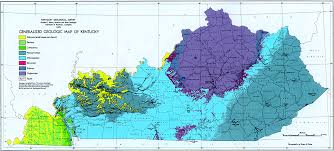
"Annual U.S. coal consumption peaked in 2007 at 1.1 billion tons and declined to 919 million tons in 2014, the least since 1992. Kentucky production topped out earlier, in 1990, at 173 million tons. The state was displaced as the nation's No. 1 producer in 1988 by Wyoming, home to the resource-rich Powder River Basin."
Friday, December 25, 2015
The Importance of Flying Cars
Things to Celebrate, Like Dreams of Flying Cars https://t.co/RC5u3kWmuq
— Dr.Steven D.Sanders (@DocEngineering) December 25, 2015
Solar vs. Coal
It’s a wonderful life for the solar industry right now https://t.co/JhgSq5EiGm via @grist
— Dr.Steven D.Sanders (@DocEngineering) December 25, 2015
MIgration
Where are Americans moving? Think sunshine and jobs https://t.co/0v4Z4BttFL via @BV
— Dr.Steven D.Sanders (@DocEngineering) December 25, 2015
Tuesday, December 22, 2015
2016 In the World of Transportation
The Biggest U.S. Transportation Projects to Watch in 2016 https://t.co/SkONWYpGHV
— Dr.Steven D.Sanders (@DocEngineering) December 23, 2015
Who Wins With Climate Change - Civil Engineering and Ice Cream
From Halliburton to Walmart, these big corporations will make money off of climate change https://t.co/adVQDWENGo via @grist
— Dr.Steven D.Sanders (@DocEngineering) December 22, 2015
Monday, December 21, 2015
Civil Engineering In the Age of Bad News
From the excellent Elizabeth Kolbert in the current issue of the New Yorker - The Siege of Miami:
"Neither of us was
wearing boots, a fact that, as we picked our way along, we agreed we regretted.
I couldn’t help recalling stories I’d heard about Miami’s antiquated sewer
system, which leaks so much raw waste that it’s the subject of frequent
lawsuits. (To settle a suit brought by the federal government, the county
recently agreed to spend $1.6 billion to upgrade the system, though many
question whether the planned repairs adequately account for sea-level rise.)
Across the soaked intersection, in front of a single-family home, a middle-aged
man was unloading groceries from his car. He, too, told us he didn’t know where
the water was coming from.
“I heard on the news
it’s because the moon turned red,” he said. “I don’t have that much detail
about it.” During the past month, he added, “it’s happened very often.” (In an
ominous development, Miami this past fall experienced several very high tides
at times of the month when, astronomically speaking, it shouldn’t have.)
“Honestly, sometimes,
when I’m talking to people, I think, Oh, I wish I had taken more psychology
courses,” Hammer told me. A lot of her job involves visiting low-lying
neighborhoods like Shorecrest, helping people understand what they’re seeing.
She shows them elevation maps and climate-change projections, and explains that
the situation is only going to get worse. Often, Hammer said, she feels like a
doctor: “You hear that they’re trying to teach these skills in medical schools,
to encourage them to have a better bedside manner. I think I might try to get
that kind of training, because it’s really hard to break bad news.”"The New Engineering Oligarchs
From New Geography:
"Ultimately the ambitions of the oligarchs are boundless. Firms like Amazon CEO Jeff Bezos’ Blue Origin, and Elon Musk’s Space X, seek to lead the world in space exploration. If NASA continues to retreat from many areas of space exploration, it is likely that, in the future, the heavens may end up belonging to the oligarchs as well."
"Ultimately the ambitions of the oligarchs are boundless. Firms like Amazon CEO Jeff Bezos’ Blue Origin, and Elon Musk’s Space X, seek to lead the world in space exploration. If NASA continues to retreat from many areas of space exploration, it is likely that, in the future, the heavens may end up belonging to the oligarchs as well."
Sunday, December 20, 2015
Friday, December 18, 2015
Wednesday, December 16, 2015
Trump to be Endorsed by the American Society of Civil Engineers?
From the debate last night:
""We've spent $4 trillion trying to topple various people," Trump said. "If we could've spent that $4 trillion in the United States to fix our roads, our bridges and all of the other problems -- our airports and all of the other problems we've had -- we would've been a lot better off. I can tell you that right now.""

""We've spent $4 trillion trying to topple various people," Trump said. "If we could've spent that $4 trillion in the United States to fix our roads, our bridges and all of the other problems -- our airports and all of the other problems we've had -- we would've been a lot better off. I can tell you that right now.""

Tuesday, December 15, 2015
Monday, December 14, 2015
Sunday, December 13, 2015
The CEO as Relentlessly Inquisitive
From a Fortune profile of Nike CEO Mark Parker - Nike's Master Craftsman:
"As Nike's boss, Parker is relentlessly inquisitive. "Mark's questions are often either leading or directive," says Andy Campion, Nike's chief financial officer and a former Disney executive. "What's fascinating about his use of questions is that it leaves other leaders empowered to find the answers themselves and act on them." Parker has a penchant, as well, for managing by aphorism. Spanx's Singer recalls him waxing sagacious on the question of talent management by comparing someone on Singer's team to an oak tree. "He told me, "Trying to turn it into a pine tree isn't going to help anyone. But making it into the best oak tree possible is the goal."

"As Nike's boss, Parker is relentlessly inquisitive. "Mark's questions are often either leading or directive," says Andy Campion, Nike's chief financial officer and a former Disney executive. "What's fascinating about his use of questions is that it leaves other leaders empowered to find the answers themselves and act on them." Parker has a penchant, as well, for managing by aphorism. Spanx's Singer recalls him waxing sagacious on the question of talent management by comparing someone on Singer's team to an oak tree. "He told me, "Trying to turn it into a pine tree isn't going to help anyone. But making it into the best oak tree possible is the goal."

Engineering in a Time of Drought and Deluge
Lewisville Dam: The dam called trouble | @dallasnews https://t.co/FgplnLoqzS
— Dr.Steven D.Sanders (@DocEngineering) December 13, 2015
Saturday, December 12, 2015
Your City as Digital Lab
As world crowds in, cities become digital laboratories https://t.co/8bEusTS0RO
— Dr.Steven D.Sanders (@DocEngineering) December 13, 2015
Water Term of the Week - Flexible Water Management
From the current issue of ENR - by Jeff Gunderson, Water Stressors Driving Projects Around the Globe. Water engineering and management is increasingly about dealing with extremes - - the yin and yang of mother nature.
"Lesile Shoemaker, Tetra Tech's executive vice president of water, environment and infrastructure, says smart and integrated water-management approaches that combine new and emerging technologies to better monitor, track and optimize systems are an emerging driver in developed markets. Along these same lines, Shoemarker sees increasing interest in the development of flexible water and wastewater management systems that can function efficiently in long cyclical droughts but quickly adapt to extreme wet conditions, when flooding risks are elevated. "Flexible water management goes right back to the idea of using real-time control and water water technology.""
"Lesile Shoemaker, Tetra Tech's executive vice president of water, environment and infrastructure, says smart and integrated water-management approaches that combine new and emerging technologies to better monitor, track and optimize systems are an emerging driver in developed markets. Along these same lines, Shoemarker sees increasing interest in the development of flexible water and wastewater management systems that can function efficiently in long cyclical droughts but quickly adapt to extreme wet conditions, when flooding risks are elevated. "Flexible water management goes right back to the idea of using real-time control and water water technology.""
Arup - The Six Steps to Green Infrastructure
Arup | Thoughts | Six steps to successful green infrastructure https://t.co/kUw40ocPWj
— Dr.Steven D.Sanders (@DocEngineering) December 12, 2015
Friday, December 11, 2015
InfraPlan
From the InfraPlan website:
"InfraPlan offers solutions supporting the rehabilitation planning of buried water and wastewater networks, as well as other assets. InfraPlan's associates have a strong combination of experiences in research and field applications in the U.S., Canada, and Europe. This has put InfraPlan in a unique position to introduce a new concept, InfraPlanSolutions, an asset management framework that incorporates the most advanced approaches and analytical models in an integrated way."
"InfraPlan offers solutions supporting the rehabilitation planning of buried water and wastewater networks, as well as other assets. InfraPlan's associates have a strong combination of experiences in research and field applications in the U.S., Canada, and Europe. This has put InfraPlan in a unique position to introduce a new concept, InfraPlanSolutions, an asset management framework that incorporates the most advanced approaches and analytical models in an integrated way."
Thursday, December 10, 2015
Wednesday, December 9, 2015
When It Rains It Pours
The Destiny of a Brand Is in Your Hand https://t.co/iP0L7Br33R
— Dr.Steven D.Sanders (@DocEngineering) December 9, 2015
Tuesday, December 8, 2015
What I Learned From Reading Rolling Stone
From the current issue by Sean Wilentz, The Turning Point:
"According to data reported by respected Democratic pollster Stanley B. Greenberg, a majority of U.S. households are now headed by unmarried people; non-religious seculars outnumber Protestants; two-thirds of women are either the breadwinners or co-breadwinners of their households. Racial minorities now constitute 40 percent of the nation's population."
"According to data reported by respected Democratic pollster Stanley B. Greenberg, a majority of U.S. households are now headed by unmarried people; non-religious seculars outnumber Protestants; two-thirds of women are either the breadwinners or co-breadwinners of their households. Racial minorities now constitute 40 percent of the nation's population."
Sunday, December 6, 2015
Extreme Weather and Wastewater Overflows in Dallas
Luke Metzger and Sara Smith: The unacceptable inundation of our water infrastructure | @DMNOpinion https://t.co/LtmmOdso7l
— Dr.Steven D.Sanders (@DocEngineering) December 6, 2015
Saturday, December 5, 2015
High Tides Realty - A Climate Change Company
Meet the New York Real Estate Consultants Profiting From Climate Change https://t.co/wodLzsFPGi
— Dr.Steven D.Sanders (@DocEngineering) December 5, 2015
Friday, December 4, 2015
The Future in 6 Phases
From Noahpinion - -
Phase 1: Technological Change. The IT revolution, computers, the internet, automation, mobile communication.
Phase 2: Globalization. The huge wave of global growth between 1990 and 2008. Globalized supply chains. A huge Latin American immigration flow into the U.S., and a huge Middle Eastern immigrant flow into Europe.
Phase 3a: Inequality. Rising income and wealth inequality everywhere. Stagnating wages in rich countries. An explosion in the number of billionaires. Soaring college tuition as workers desperately try to get skills.
Phase 3b: Cultural Change. Greater economic opportunity and equality for women, due to the service economy. A rise in divorce and single parenthood, and a drop in marriage. Sex culture spreading via the Internet. The decline of religion.
Phase 3c: Financialization: The explosion of financial profits and output as percentages of the total.
Phase 3d: Geopolitical Shift: The rise of China and the recovery of Russia, and (most importantly) the de facto alliance between the two.
Phase 4: Rise of Extremism. The steady polarization of American politics. Skyrocketing use of the filibuster. The Tea Party. The debt ceiling crisis. Trump. Sanders. Fox vs. MSNBC. Le Pen. The British National Party. Syriza and Golden Dawn. The Zaitokukai. Campus anti-speech movements. Online wars between leftist "SJWs" and rightists (GamerGate, etc.). The normalization of the terms "fascist" and "socialist". Illiberalism on both sides of the political spectrum.
Phase 5: Economic Slowdown: The 2008 crisis and the Great Recession, the Euro crisis and the China slowdown and the emerging markets slowdown.
Phase 6: War. Let's hope not...
Thursday, December 3, 2015
Moving Refugees to Ohio

From New Geography:
"Youngstown mayor John McNally has said that his most important task is to stop the depopulation. A city like Youngstown needs to stop the hemorrhaging and get an infusion of energy. Would the city gain by encouraging refugees to move to Youngstown? Other communities have tried this approach, encouraging immigrants to move to depopulated areas and gaining new economic activity in the process. Weather-challenged Winnipeg, the capital of Manitoba, has taken advantage of the Manitoba Provincial Nominee Program, which “selects applicants who demonstrate they have the potential and the desire to immigrate and settle themselves and their families in the Canadian province of Manitoba.” Immigrants may apply through different categories such as General, Family Support, International Student, Employer, Strategic Initiative, or Business Immigration. An Economic Development study reports that Winnipeg’s metropolitan population has grown to 780,000, 100,000 higher than earlier projections. The population increase includes about 85,000 immigrants. Between 2009-2014, the local economy stabilized with unemployment below the national average and higher labor force participation and wage growth. In 2014, the city was touted by KPMG as the No. 1 low cost manufacturing location in aerospace, chemical, electronics assembly, pharmaceuticals and telecommunications equipment in North America."
Wednesday, December 2, 2015
What Do Engineers Mean by the Word Resilience?
From the New York Times magazine - The Profound Emptiness of "Resilience":
"But where ‘‘resilience’’ can suggest new avenues for civic infrastructure — admitting that disaster can’t always be diverted and shifting the focus to survival strategies — it is indistinguishable from classic American bootstrap logic when it is applied to individuals, placing all the burden of success and failure on a person’s character. ‘‘It’s pretty much the same message that’s drummed into us by Aesop’s fables, Benjamin Franklin’s aphorisms, Christian denunciations of sloth and the 19th-century chant invented to make children do their homework: ‘If at first you don’t succeed, try, try again,’ ’’ the social scientist Alfie Kohn argued in an op-ed article in The Washington Post. ‘‘The more we focus on whether people have or lack persistence (or self-discipline more generally), the less likely we’ll be to question larger policies.’’"

"But where ‘‘resilience’’ can suggest new avenues for civic infrastructure — admitting that disaster can’t always be diverted and shifting the focus to survival strategies — it is indistinguishable from classic American bootstrap logic when it is applied to individuals, placing all the burden of success and failure on a person’s character. ‘‘It’s pretty much the same message that’s drummed into us by Aesop’s fables, Benjamin Franklin’s aphorisms, Christian denunciations of sloth and the 19th-century chant invented to make children do their homework: ‘If at first you don’t succeed, try, try again,’ ’’ the social scientist Alfie Kohn argued in an op-ed article in The Washington Post. ‘‘The more we focus on whether people have or lack persistence (or self-discipline more generally), the less likely we’ll be to question larger policies.’’"

Tuesday, December 1, 2015
Customer Micro-Moments and Mobile Technology
From Think With Google:
"Let me give you a very clear example of that. A micro-moment when you're traveling is wanting to get into your hotel room and not have to wait in line to check-in. With the Starwood app, you can check-in right on the app. As soon as you enter the property, beacons recognize that you're there. You verify your identity with a fingerprint (if you’re on an iPhone), the app provides your room number, and then you simply hold your phone up to the entranceway to the room, and go right in. That's an amazing way for a brand to help you in a micro-moment."
"Let me give you a very clear example of that. A micro-moment when you're traveling is wanting to get into your hotel room and not have to wait in line to check-in. With the Starwood app, you can check-in right on the app. As soon as you enter the property, beacons recognize that you're there. You verify your identity with a fingerprint (if you’re on an iPhone), the app provides your room number, and then you simply hold your phone up to the entranceway to the room, and go right in. That's an amazing way for a brand to help you in a micro-moment."
Housing Booms and Busts
The Housing Boom Is Not a Bubble https://t.co/YdpSfl923J
— Dr.Steven D.Sanders (@DocEngineering) December 2, 2015
Tuesday, November 24, 2015
Black Friday Parking
Mapping America's Ongoing Fight Against Excess City Parking https://t.co/8C1H8PmhXy
— Dr.Steven D.Sanders (@DocEngineering) November 24, 2015
Monday, November 23, 2015
What Is a Sponge City?
From Grist:
"China’s plan for spongifying its water systems is starting with 16 pilot cities, which will each receive up to 63 million dollars per year over three years for water-related initiatives. According to the Guardian, these projects will likely include developing ponds, filtration pools, and wetlands; building permeable roads and public spaces where rain can soak into the ground; and creating rooftop gardens."
"China’s plan for spongifying its water systems is starting with 16 pilot cities, which will each receive up to 63 million dollars per year over three years for water-related initiatives. According to the Guardian, these projects will likely include developing ponds, filtration pools, and wetlands; building permeable roads and public spaces where rain can soak into the ground; and creating rooftop gardens."
Sunday, November 22, 2015
Marketing and Hostage Negotiations
Interesting article - - from hooks, hot buttons, to active listening - - negotiating with bad guys is similar to marketing and client relationship management.
Word of the Week - Agrihood

From the New York Times:
"The neighborhood is called Agritopia, and it’s one of a growing number of so-called agrihoods, residential developments where a working farm is the central feature, in the same way that other communities may cluster around a golf course, pool or fitness center. The real estate bust in 2008 halted new construction, but with the recovery, developers are again breaking ground on farm-focused tracts. At least a dozen projects across the country are thriving, enlisting thousands of home buyers who crave access to open space, verdant fields and fresh food."
Saturday, November 21, 2015
OneTouchPM
A 3-D Tool for Integrated Program Management - Burns & McDonnell https://t.co/dwODGBLshr via @sharethis
— Dr.Steven D.Sanders (@DocEngineering) November 22, 2015
Good Example of Presenting Geographical Information
Inside Raqqa, the Capital of ISIS https://t.co/1wJG29hj26
— Dr.Steven D.Sanders (@DocEngineering) November 21, 2015
Friday, November 20, 2015
Thursday, November 19, 2015
One Concern - The Disaster Response Algorithm
Pleased to be highlighted in CityLab. https://t.co/toWwhgT9gi
— One Concern, Inc. (@oneconcerninc) November 19, 2015
Wednesday, November 18, 2015
Engineering From Mars to Manhattan
What NASA Can Teach Urban Planners https://t.co/0KlSqdOvOq
— Dr.Steven D.Sanders (@DocEngineering) November 19, 2015
Tuesday, November 17, 2015
Infrastructure Investing and the Decline of the White Male Working Class
All of the reasons for increasing our investment in public infrastructure are good. A new reason might be the increase of white working class mortality. From CityLab:
"Who cares what white, working-class Americans think? Obviously, it matters from a political perspective. But recall that this group has been making news for reasons other than its support of Trump.
A recent study found that, while death rates for virtually all other demographics are on the decline, death rates for white Americans age 45 to 54 and with a high-school education or less have risen by 22 percent since 1999. Suicides, drugs, and alcohol are believed to largely explain the increase, which may reflect bleak health and economic circumstances among this demographic.
Hopelessness, rage, a sense of lost opportunity: These feelings seem to help explain the increased mortality rates, as well as the political values of many white, working-class Americans. It’s easy to wave them off in the form of Trump’s circus-ringleader-style rhetoric, but it may be a matter of national health to take them seriously."
Monday, November 16, 2015
Atkins Talks Tech and Infrastructure
Time to plan for easy tech upgrades in built to last infrastructure https://t.co/m4l8GCuUSh
— Dr.Steven D.Sanders (@DocEngineering) November 17, 2015
Design Thinking and IBM
From the New York Times - IBM's Design-Centered Strategy to Set Free the Squares:
"Mr. Gilbert answers that question with something called design thinking. (His title is general manager of design.) Among other things, design thinking flips traditional technology product development on its head. The old way is that you come up with a new product idea and then try to sell it to customers. In the design thinking way, the idea is to identify users’ needs as a starting point.
Mr. Gilbert and his team talk a lot about “iteration cycles,” “lateral thinking,” “user journeys” and “empathy maps.” To the uninitiated, the canons of design thinking can sound mushy and self-evident. But across corporate America, there is a rising enthusiasm for design thinking not only to develop products but also to guide strategy and shape decisions of all kinds. The September cover article of the Harvard Business Review was “The Evolution of Design Thinking.”
Venture capital firms are hiring design experts, and so are companies in many industries. Still, the IBM initiative stands out. The company is well on its way to hiring more than 1,000 professional designers, and much of its management work force is being trained in design thinking. “I’ve never seen any company implement it on the scale of IBM,” said William Burnett, executive director of the design program at Stanford University. “To try to change a culture in a company that size is a daunting task.”"
"Mr. Gilbert answers that question with something called design thinking. (His title is general manager of design.) Among other things, design thinking flips traditional technology product development on its head. The old way is that you come up with a new product idea and then try to sell it to customers. In the design thinking way, the idea is to identify users’ needs as a starting point.
Mr. Gilbert and his team talk a lot about “iteration cycles,” “lateral thinking,” “user journeys” and “empathy maps.” To the uninitiated, the canons of design thinking can sound mushy and self-evident. But across corporate America, there is a rising enthusiasm for design thinking not only to develop products but also to guide strategy and shape decisions of all kinds. The September cover article of the Harvard Business Review was “The Evolution of Design Thinking.”
Venture capital firms are hiring design experts, and so are companies in many industries. Still, the IBM initiative stands out. The company is well on its way to hiring more than 1,000 professional designers, and much of its management work force is being trained in design thinking. “I’ve never seen any company implement it on the scale of IBM,” said William Burnett, executive director of the design program at Stanford University. “To try to change a culture in a company that size is a daunting task.”"
Sunday, November 15, 2015
The Stress of Managing a Water Utility
Mexico City's water crisis – from source to sewer https://t.co/zBaZO3EUAV
— Dr.Steven D.Sanders (@DocEngineering) November 15, 2015
Saturday, November 14, 2015
Sedaru Water Modeling Tools
Sedaru is the true smart water enterprise platform that unites your entire water utility, connects your GIS, AMI/AMR,...
Posted by IDModeling, Inc. on Friday, June 19, 2015
Engineering and Your Reputation
Why Reputation Is Your Most Valuable Asset https://t.co/T8fhi6QWNy
— Dr.Steven D.Sanders (@DocEngineering) November 14, 2015
Is Your Company Busy With Being Born or Busy With Dying?
Arup | Thoughts | Three ways to foster intrapreneurship https://t.co/SuC8apSF5C
— Dr.Steven D.Sanders (@DocEngineering) November 14, 2015
Slope Failure Infographic
How debris flows happen https://t.co/q68DqQZdFQ
— Dr.Steven D.Sanders (@DocEngineering) November 14, 2015
Friday, November 13, 2015
Engineering Miami
A Rising Tide https://t.co/MTcLE3OdHe
— Dr.Steven D.Sanders (@DocEngineering) November 13, 2015
Thursday, November 12, 2015
Our Transit Backlog
America’s Top Transit Systems Face a $102 Billion Repair Backlog https://t.co/mBoiHDoEnP
— Dr.Steven D.Sanders (@DocEngineering) November 13, 2015
Wednesday, November 11, 2015
Mid-sized Utility Optimization
Seven Tips to Optimize Mid-sized Water Utility Operations https://t.co/KWVucstdke
— Dr.Steven D.Sanders (@DocEngineering) November 11, 2015
Tuesday, November 10, 2015
How Smart is Dallas?
Dallas starts to get it on being a ‘smart’ city | @DMNbiz https://t.co/CNI9DUow7x
— Dr.Steven D.Sanders (@DocEngineering) November 10, 2015
Monday, November 9, 2015
Banking on El Nino
Video: https://t.co/KT0lHZaQkR
— Dr.Steven D.Sanders (@DocEngineering) November 10, 2015
The World of Subway Map Designers
Why designers can’t stop reinventing the subway map https://t.co/43DImomkeU
— Dr.Steven D.Sanders (@DocEngineering) November 10, 2015
Creating a Joint Common Operational Picture - JECOP
Creating a Joint Common Operational Picture - current issue of SAME/TME (The Military Engineer)
Sunday, November 8, 2015
Are We (Engineers) Heading for An Economic Civil War?
Interesting post in NewGeography. Engineering is increasingly defined and divided like our overall society. Those engineers that work in the world of the tangible (i.e., manufacturing, construction, and resource development) and the world of the intangible (i.e., consulting, software development, financial services). When the world of the tangible runs out of opportunity due to automation, AI, and offshoring, will the world of the intangible provide enough middle class jobs?
Link - Are We Heading for An Economic Civil War?

Link - Are We Heading for An Economic Civil War?

The Price of Parking
You’ve heard about surge pricing. Get ready for surge-priced parking. https://t.co/2ZzXmdYf4h
— Dr.Steven D.Sanders (@DocEngineering) November 8, 2015
Texas Lake Levels
The current state of Texas' reservoir levels https://t.co/qrImpbyPsb via @texastribune
— Dr.Steven D.Sanders (@DocEngineering) November 8, 2015
Bennie Sanders (Larry David) on our Crumbling Infrastructure
From The Hill:
"David’s Sanders also said he refuses to drive on bridges or through tunnels because of America’s crumbling infrastructure.
“Instead, I keep a kayak strapped to the top of my car,” he said. “Whenever I get to a bridge, I park, abandon my car, paddle to the other side. So if you ever see a soaking wet man pulling a kayak out of a river and screaming about bridges, give him a hand, because he’s your next president.”"
Saturday, November 7, 2015
City of Dallas - Paying for the Past or Investing in the Future
Story from the Dallas Morning News on recent bond rating down grades for the City of Dallas. The primary concern is the underfunded level of the Dallas police and fire pension fund. The city faces a key infrastructure renewal fork in the road moment that many other communities will be facing - funding retirements or fixing potholes.
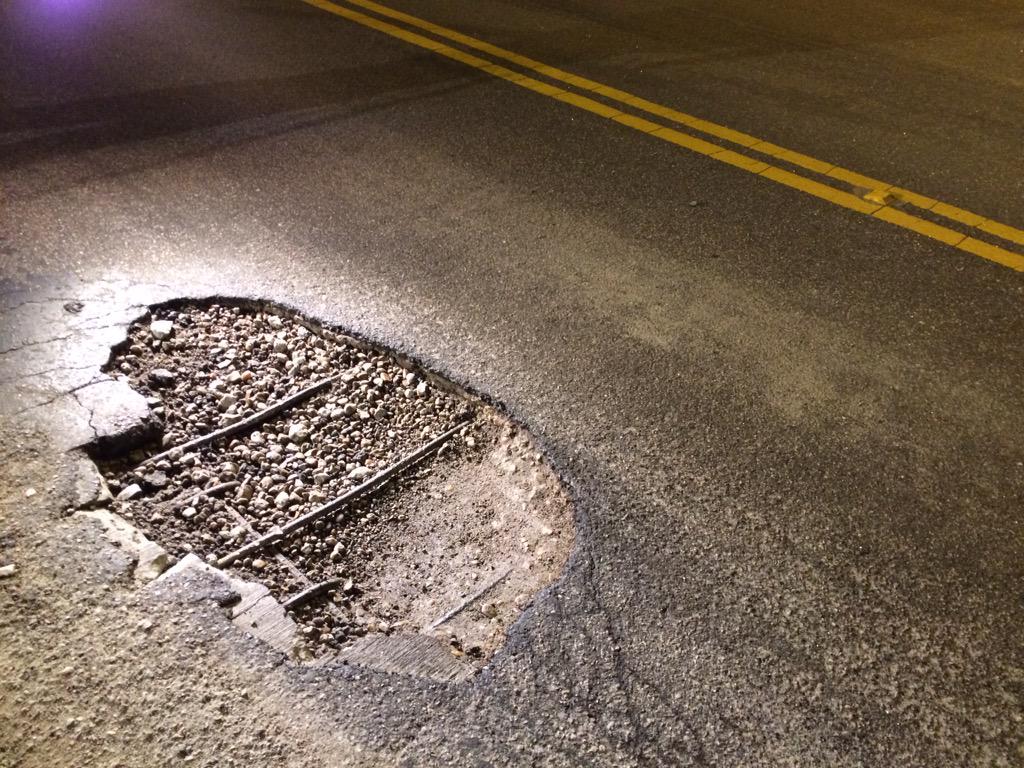

Infrastructure Decline and Dystopian Societies
Human Cost Rises as Old Bridges, Dams and Roads Go Unrepaired https://t.co/APsnu8E0UE
— Dr.Steven D.Sanders (@DocEngineering) November 7, 2015
Ben Carson on Advannced Engineering
 From VOX:
From VOX:"Carson also argued that the advanced engineering the pyramids required can be explained by divine intervention. "And various [sic] of scientists have said, 'Well, you know there were alien beings that came down and they have special knowledge and that's how' — you know, it doesn't require an alien being when God is with you." (For the record, scientists do not believe that aliens taught the Egyptians how to build the pyramids.)"
Friday, November 6, 2015
Engineering Generational Housing
Dorms for Grownups: A Solution for Lonely Millennials? https://t.co/2aaCroS5Md
— Dr.Steven D.Sanders (@DocEngineering) November 7, 2015
Toyota's Push Into AI
Toyota Invests $1 Billion in Artificial Intelligence in U.S. https://t.co/9eNnt6J1ij
— Dr.Steven D.Sanders (@DocEngineering) November 6, 2015
Thursday, November 5, 2015
Thinking About IRR
A better way to understand internal rate of return https://t.co/MCymJLAXX7 via @sharethis
— Dr.Steven D.Sanders (@DocEngineering) November 5, 2015
Wednesday, November 4, 2015
Climate Change Realities and Engineering Climate Change Resiliency
The Tough Realities of the Paris Climate Talks https://t.co/N09NtnhxGF
— Dr.Steven D.Sanders (@DocEngineering) November 4, 2015
Tuesday, November 3, 2015
Green and Decentralized
Arup | Thoughts | Are foul sewerage systems sustainable? https://t.co/rfXlrZtsd0
— Dr.Steven D.Sanders (@DocEngineering) November 3, 2015
A Paragraph to Ponder
From Meetings of the Minds:
"The first-in-the-nation competition harnesses value embedded in the utility platform and enables greater adoption of new energy solutions customers want. Strengthening and modernizing the State’s electric grid not by government handouts to utilities, but by empowering communities and third parties to integrate microgrids and put forth new business models that serve critical infrastructure, and have the ability to delight and surprise customers with new energy products and services that improve their quality of life. Microgrids are localized and optimized grids that can disconnect from the traditional electric grid to operate autonomously and fill critical infrastructure and service needs in the event of an emergency. They also operate during normal, ‘blue-sky’ days and can help defer costly infrastructure investments that would lead to higher bills for customers. These systems can be thought of as ‘the brains’ of any distributed energy resource, like solar or storage; they have a variety of options to “share” their services with the grid – such as by participating in demand response programs or by providing ancillary services (such as voltage control or regulation) by selling generated excess power back to the grid."
"The first-in-the-nation competition harnesses value embedded in the utility platform and enables greater adoption of new energy solutions customers want. Strengthening and modernizing the State’s electric grid not by government handouts to utilities, but by empowering communities and third parties to integrate microgrids and put forth new business models that serve critical infrastructure, and have the ability to delight and surprise customers with new energy products and services that improve their quality of life. Microgrids are localized and optimized grids that can disconnect from the traditional electric grid to operate autonomously and fill critical infrastructure and service needs in the event of an emergency. They also operate during normal, ‘blue-sky’ days and can help defer costly infrastructure investments that would lead to higher bills for customers. These systems can be thought of as ‘the brains’ of any distributed energy resource, like solar or storage; they have a variety of options to “share” their services with the grid – such as by participating in demand response programs or by providing ancillary services (such as voltage control or regulation) by selling generated excess power back to the grid."
Monday, November 2, 2015
Engineering and Warm Water
The Pacific Ocean Becomes a Caldron https://t.co/Fqcy5dhgx2
— Dr.Steven D.Sanders (@DocEngineering) November 3, 2015
Stopping Terror Attacks
How the NYPD Stops Terror Attacks https://t.co/NRD4bmOsqD via @thedailybeast
— Dr.Steven D.Sanders (@DocEngineering) November 3, 2015
Speaking Less / Saying More
Brevity: 3 tips for speaking less and saying more https://t.co/gjsAHog9yV via @techrepublic
— Dr.Steven D.Sanders (@DocEngineering) November 2, 2015
Disaster Planning and Loving Your City
Too Much City Pride Makes Us Poor Disaster Planners https://t.co/Mr5ipNGZpB
— Dr.Steven D.Sanders (@DocEngineering) November 2, 2015
Sunday, November 1, 2015
Key Ingredients of Entrepreneurship at Stanford
From the current issue of The Chronicle of Higher Education - Inside Startup U: How Stanford Develops Entrepreneurial Students:
- Networking and collaboration across disciplines and schools. Embodied best by the Hasso- Plattner Institute of Design, programs and courses that cross disciplines are support by the university. About one-quarter of students purse interdisciplinary majors.
- Close connections to industry. Local leaders play an active role on campus, serving as instructors and mentors to students, and as collaborators with faculty members. Stanford offers professors a two-year leave for opportunities to work in industry.
- Classes, centers, and organizations that focus on innovation. Students can choose among dozens of offerings, both academic and applied, that build entrepreneurial skills.
- A robust liberal-arts environment. As enrollments in engineering have grown, Stanford has sought to bolster and humanities and social sciences, too, including by creating programs such as CS+X, a joint major in computer science and a humanities field.
- Support for commercialization of research and ideas. Established entities, like the Office of Technology Licensing, and newer ones, like StartX, a nonprofit, Stanford-affiliated business accelerator, offer faculty members, students, and alumni help with the technical and development sides of entrepreneurship.
Saturday, October 31, 2015
Cities Built on Resilience
From the WSJ:
"The World Bank estimates that the share of the world’s population living in large cities exposed to tropical cyclones and earthquakes will rise from 11% in 2000 to 16% in 2050. Economic exposure will grow even more because of rising sea levels linked to a warmer climate, economic growth and urbanization.
In 2005, the 10 cities most economically exposed to coastal flooding—led by Miami, New York, New Orleans, Osaka-Kobe and Tokyo—accounted for 5% of world GDP. That is likely to grow to 9% by the 2070s as Guangzhou, Kolkata, Shanghai, Mumbai, Tianjin, Hong Kong and Bangkok join the list.
As for New York City, it has been courting disaster virtually ever since its founding. The areas of lower Manhattan inundated by Sandy correspond almost exactly to those parts reclaimed from the seas since 1609. Two Dutch water experts, Jeroen Aerts and Wouter Botzen, have calculated that in the past century, the value of buildings in New York’s hundred-year flood zone has risen from less than $1 billion to $18 billion (in constant 2009 dollars)."
Friday, October 30, 2015
A Paragraph to Ponder
From Inside Climate News - Power Grid Remains Ill Prepared for Future Hurricanes, Study Shows:
"The report focused on five metropolitan regions: the Delaware Valley, southeastern Virginia, the South Carolina lowcountry, southeastern Florida and the central Gulf Coast. The proportion of exposed substations ranged from 16 percent in southeastern Florida to nearly 70 percent in the central Gulf Coast. In Norfolk, Va. and Charleston S.C., more than 80 percent of substations would likely be inundated."
"The report focused on five metropolitan regions: the Delaware Valley, southeastern Virginia, the South Carolina lowcountry, southeastern Florida and the central Gulf Coast. The proportion of exposed substations ranged from 16 percent in southeastern Florida to nearly 70 percent in the central Gulf Coast. In Norfolk, Va. and Charleston S.C., more than 80 percent of substations would likely be inundated."
Thursday, October 29, 2015
Wednesday, October 28, 2015
Tuesday, October 27, 2015
Monday, October 26, 2015
Dallas Rail-Volution Conference - October 25-28, 2015
Link to a Dallas transit development conference.
Subscribe to:
Posts (Atom)



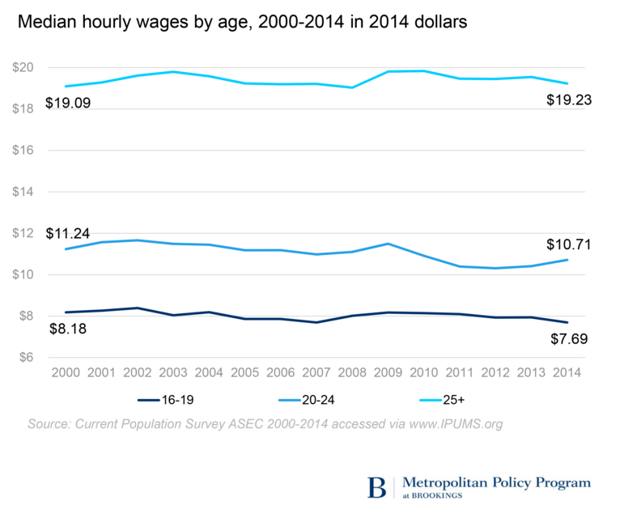








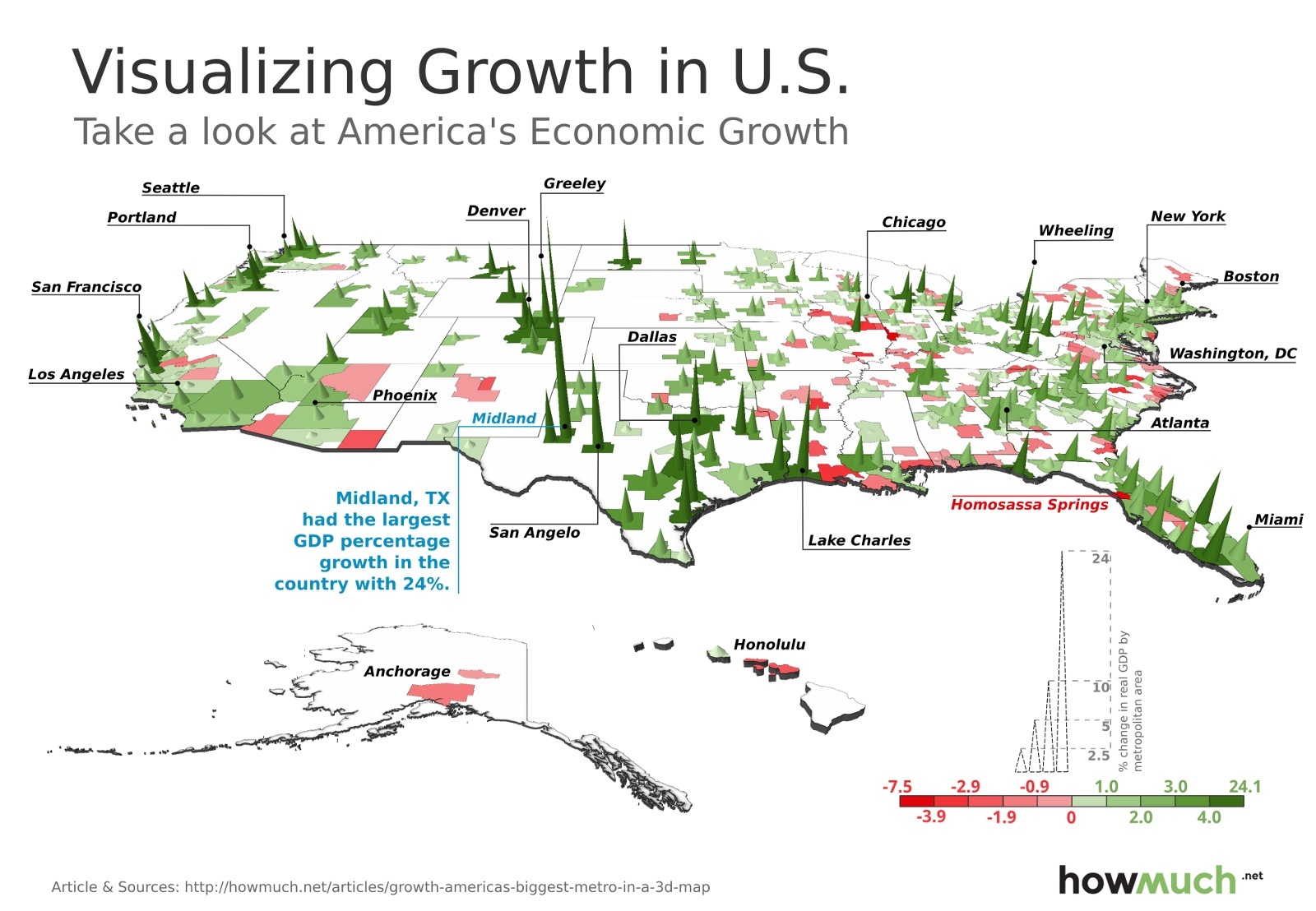



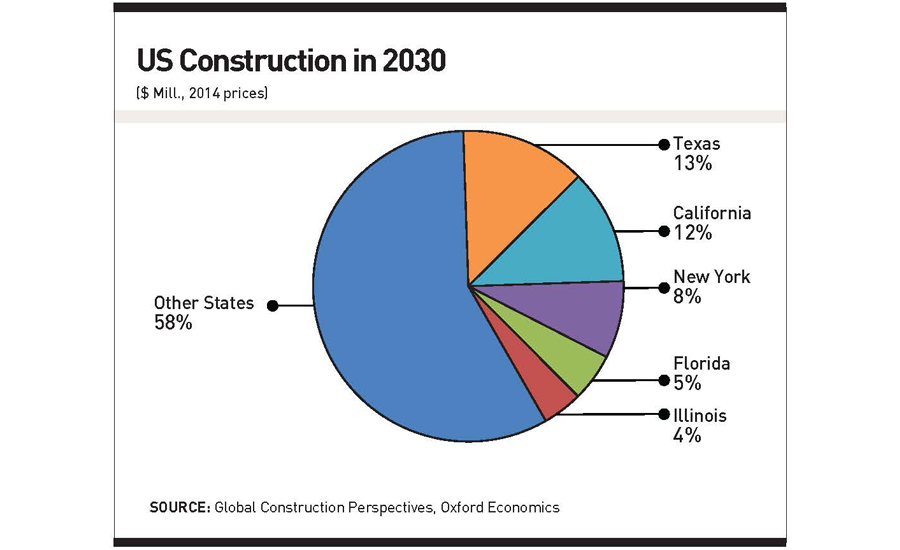
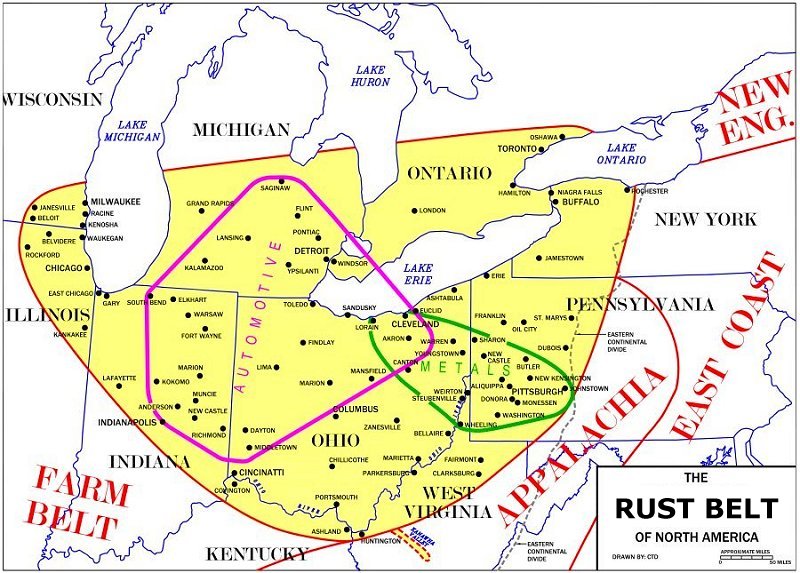
/cdn0.vox-cdn.com/uploads/chorus_asset/file/4259369/GOP-Candidates-Tax-Plans-FINAL.png)
